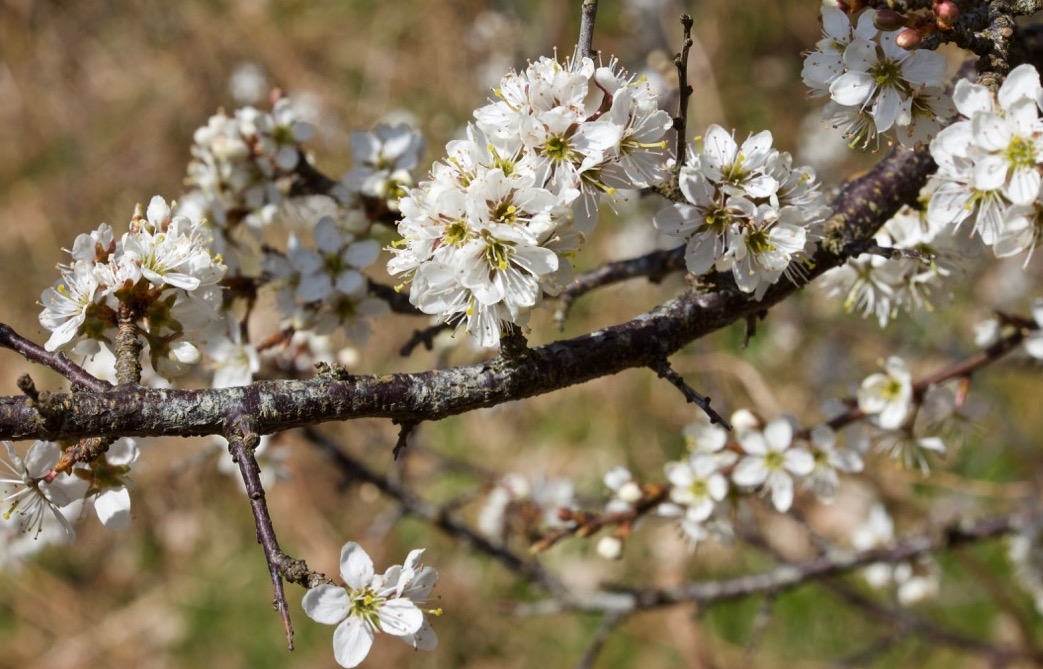
Blackthorn: the darkest wood
This morning, with violent gusts of wind swaying the trunks of the sturdiest wych elms and sending splinters of branches flying like missiles up the road, for some reason I began to think of the Cailleach or hag-goddess of winter.
Because the Cailleach, according to folklore, is the bringer of winter storms, who strikes the ground with her staff and turns it white with snow. She is old and haggard, vengeful and unpredictable. Just when you think you’re seeing the first benign glimpses of spring, she arrives in the night with a blast of fury, shaking the snowdrops until they lean about in exhaustion, looking for support.
The staff carried by the Cailleach is made of blackthorn. The name itself suggests malevolent properties, and it’s therefore no surprise that this is a witch’s tree, whose dark powers are in direct contrast with the equally magical hawthorn (in fact the hawthorn is often known as ‘whitethorn’). Wands were often cut out of blackthorn, and spells were uttered over its thorns, which are wickedly long and sharp. In his ‘Sylva’ (1664), horticulturist John Evelyn describes the blackthorn’s “terrible and almost irresistible spines, able almost to pierce a coat of mail.”
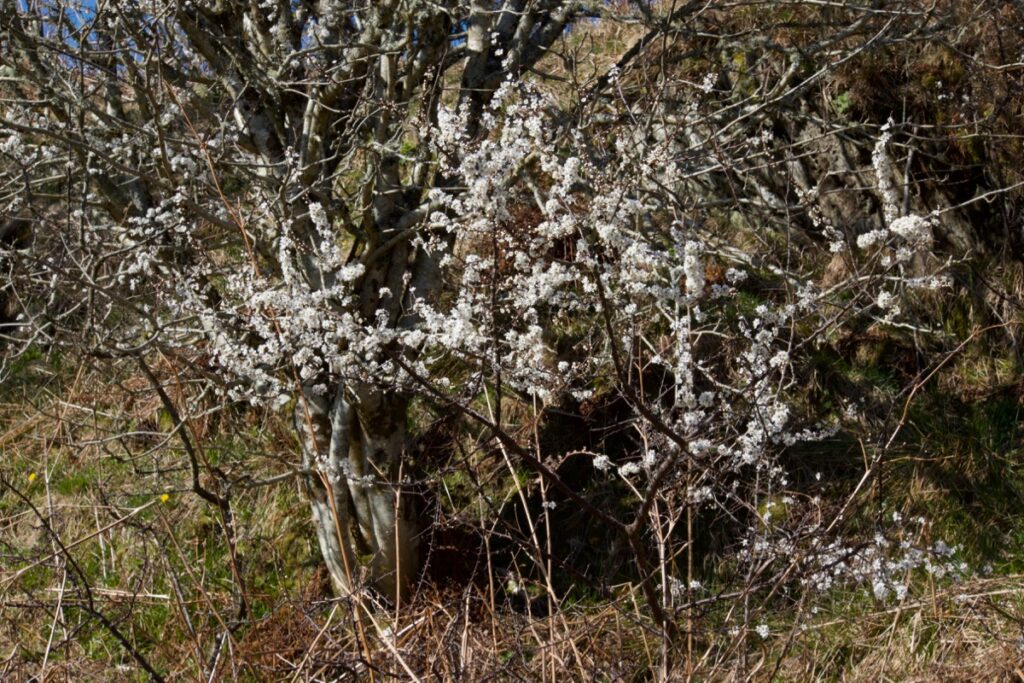
Blackthorn never really grows to a great height; it assumes more of a ragged, bush-like appearance, and on exposed hillsides around here it’s often hunched over, having been sculpted by the wind. Most of the time you’re unaware that blackthorn is even there, but when masses of starry white blossoms light up its bare branches in early spring it draws the eye in fields and hedgerows, and you’re suddenly filled with the hope – usually premature – that the season has turned the corner into spring. Curiously, blackthorn blossom often appears during a particularly cold spell of weather, a phenomenon which is called a ‘blackthorn winter’:
“It is a remarkable fact that there is always, that is every year of our lives, a spell of cold and angry weather just at the time this hardy little tree is in bloom. The country people call it the Black Thorn winter and thus it has been called, I dare say, by all the inhabitants of this island, from generation to generation, for a thousand years.”
William Cobbett, ‘The Woodlands, or a treatise on the preparing of ground for planting…’, 1825
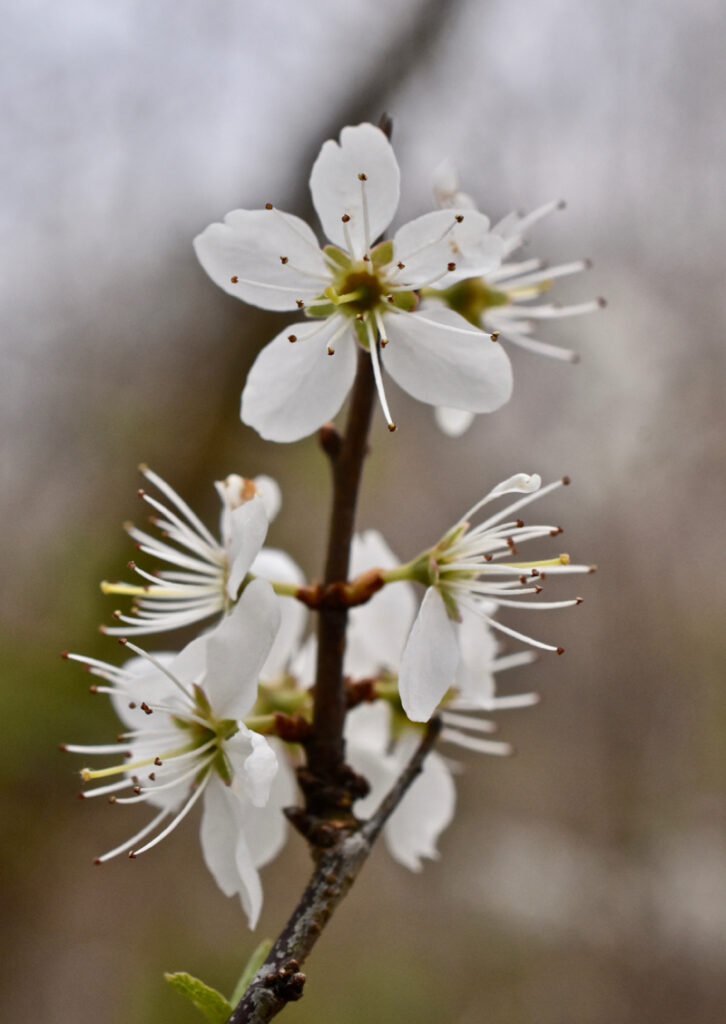
It is tempting to snip a sprig or two of blackthorn blossom to bring indoors, but this was once considered to bring bad fortune. In Irish folklore the blackthorn even had its own guardian fairies, called the Lunantishee; these fae folk were especially protective during the festivals of Beltane and Samhain, when humans were tempted to cut some branches. This makes me wonder if witches were exempt from these rules, or whether they had an agreement with the Lunantishee… or perhaps they had to ask several times, as you do with the elder.
All things considered, it’s probably safer to admire blackthorns in situ, and look forward to the abundant crop of sloes in autumn. The fruits, which have a lovely dusty ‘bloom’ on them, are traditionally picked after the first frost to make sloe gin, cordial and jellies. Eating them raw isn’t a prospect for the faint-hearted, but according to the naturalist Edward Step it’s worth persisting:
“Terribly harsh are these fruits to the palate, and a mere bite at an unripe one is sufficient to set teeth on edge and contract the muscles of mouth and face. And yet, when the tight jacket of the Sloe begins to relax and pucker, the juice condenses into more mealy flesh, and the acridity passes, one may eat not one but a dozen, slowly, enjoying the piquancy of each before swallowing.”
‘Wayside and Woodland Trees’, 1904
I’ve got to say that I’m not entirely convinced about that.
If a single, solitary blackthorn tree has a magical presence, how much more powerful is a grove of them, because they seem (like all trees) to grow as one entity. Last November, on the way down towards Keills in Knapdale, we noticed a low rocky outcrop that was encircled by blackthorn bushes. What were they guarding, I wanted to know… so we picked our way over there, but of course there was nothing to see (with our human eyes!) except a natural ridge surrounded by an impenetrable thicket. The trees were gnarled and weather-beaten, all quietly focused inwards on… something. One or two sloes still clung on to the lichen-encrusted branches.
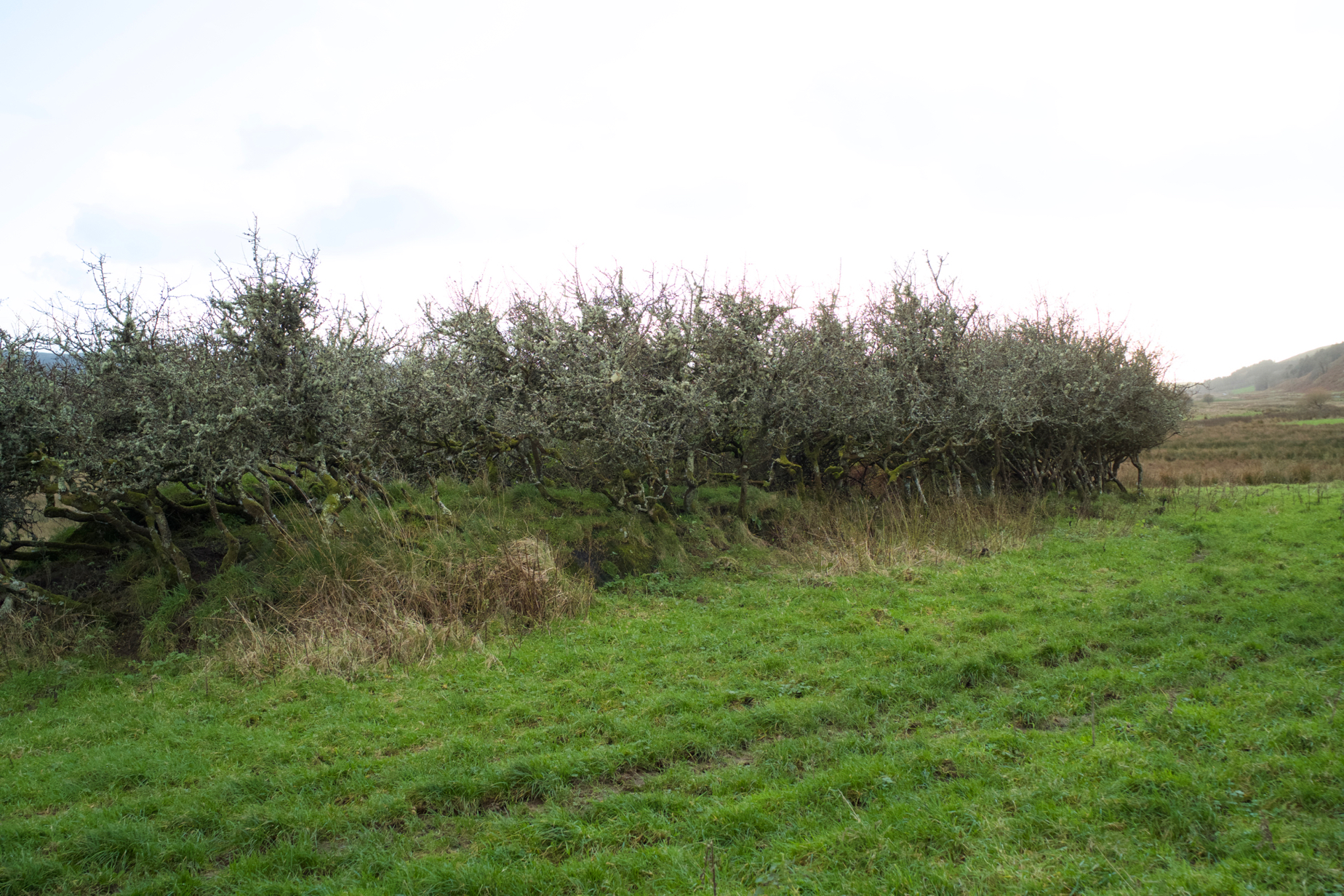
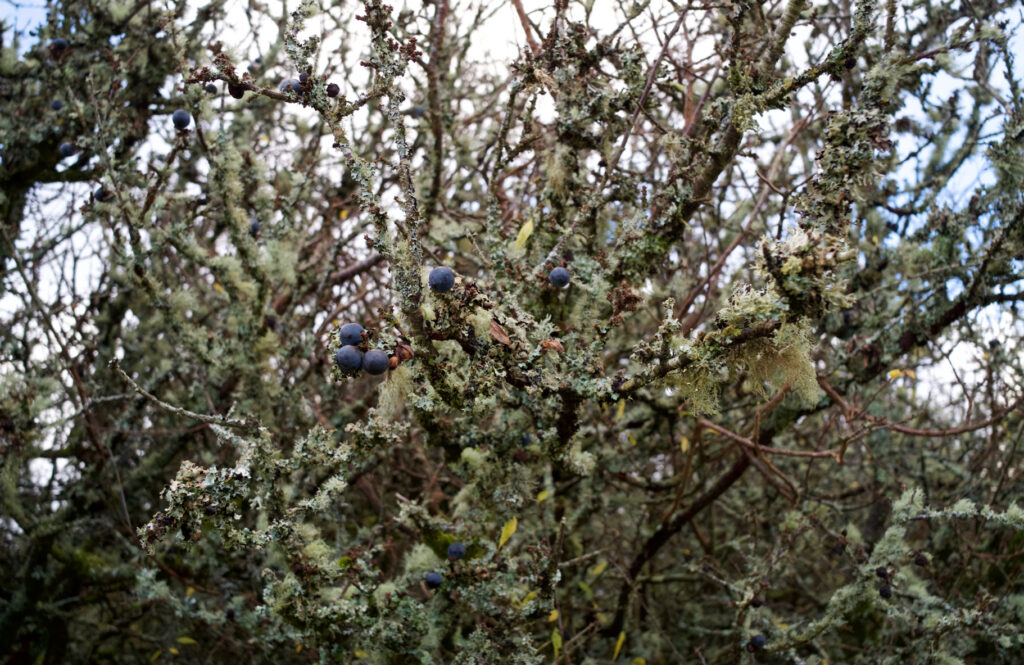
When I was writing ‘Britain’s Trees’ I came across a lovely old poem within a medieval Irish text known as Aidedh Ferghusa meic Léide (the Death of Fergus). In the poem, Iubhdán, the king of the fairies, advises the ruler of Ulster, Fergus mac Léide, about which trees can be cut and burned as firewood, and which must be left alone. The blackthorn was one to be avoided:
The surly blackthorn is a wanderer, and a wood that the artificer burns not; throughout his body, though it be scanty, birds in their flocks warble.
Standish H O’Grady (ed. & tr.) Silva Gadelica, (London: Williams and Norgate, 1892)
So the blackthorn is a place of refuge for birds, and that makes it precious. When it’s stormy and I’m worried about all the finches and thrushes, the wrens and the robins, then I’m glad for these impenetrable bushes of blackthorn, where the wind can scarcely enter, and most predators must surely be deterred as well. In spring they will provide security for eggs and nestlings and support a whole host of insects, and in the autumn their fruits offer a source of food that lasts well into winter.
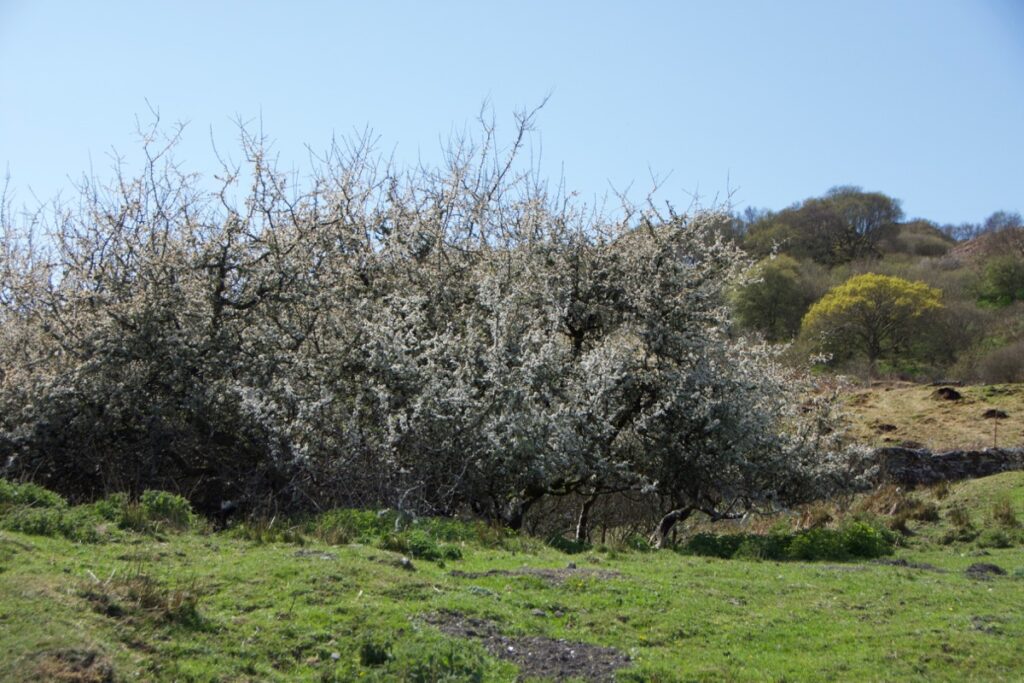
In the time it’s taken me to write this, the worst of the gale has blown itself out, although the sea is still flecked with little white tops that don’t quite know where to go. I’m prepared to believe that the Cailleach might have some redeeming qualities – at least, in her association with the blackthorn – and meanwhile there are plenty of fallen branches to pick up. I guess I’ll have to consult Iubhdán, king of the fairies, about whether we can burn them or not.
Reference:
- Edward Step, ‘Wayside and Woodland Trees‘ (1904)
- William Cobbett, ‘The Woodlands’ (1825)
- John Evelyn, ‘Sylva’ (1664)
- T F Thiselton-Dyer, ‘The Folklore of Plants’ (1889)
- G Hemery and S Simblet, ‘The New Sylva‘ (2014)
- Mabey, Richard, ‘Flora Britannica’ (1996)
- Roy Vickery, ‘A Dictionary of Plant Lore’ (1995)
- Standish H O’Grady, Silva Gadelica (1892)
Images © Colin & Jo Woolf
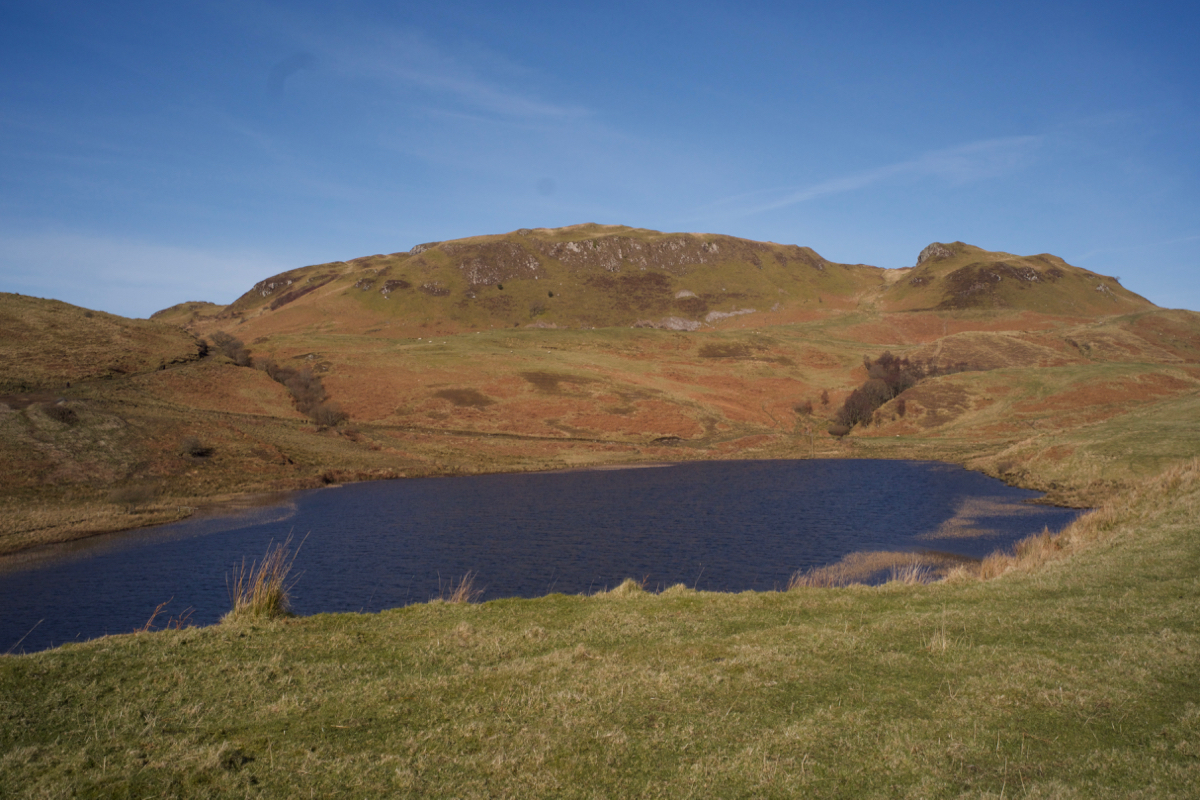

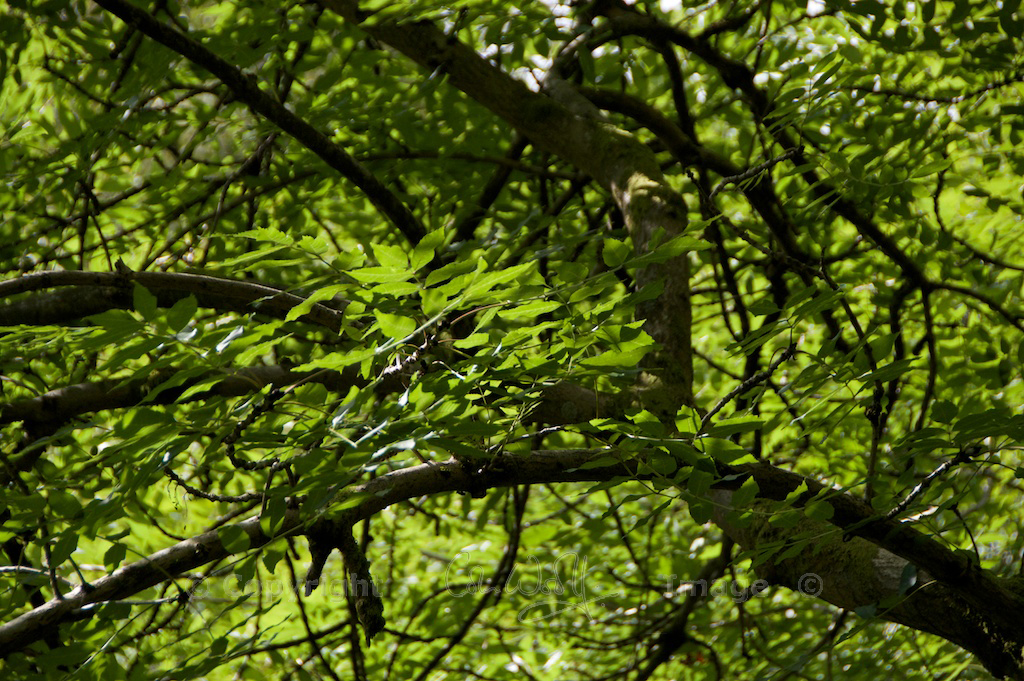
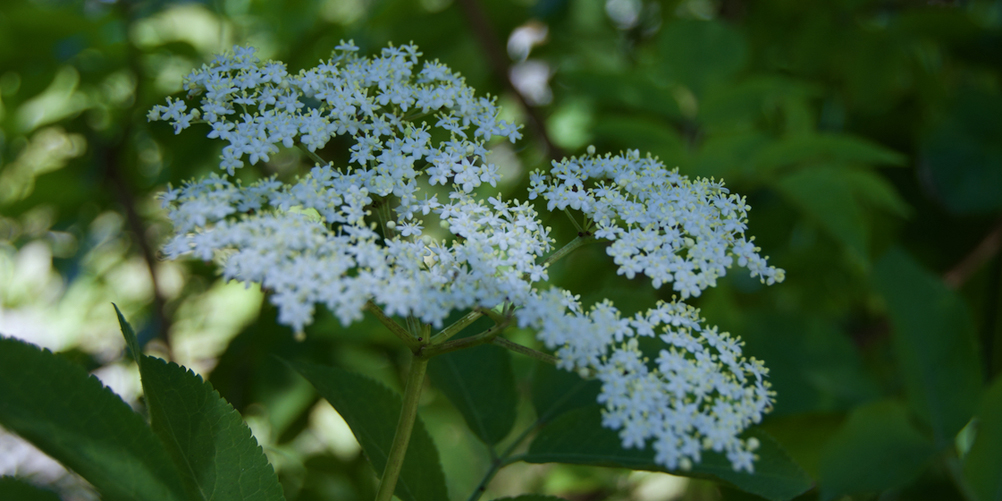
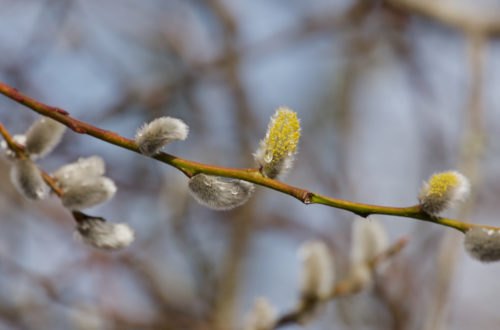
10 Comments
Judith B Hazen
What a delightful read on a cold but clear winter day here in a high mountain valley of the Rocky Mountains in Colorado, USA. The description of eating the unripe Blackthorn berry is wonderful! We have native choke cherries here that will turn your face to a permanant pucker if eaten too early. They are acrid enough when ripe. THANK YOU…you brightened my morning with sheltering birds, lovely early spring blossoms and tales of faeries!
Jo Woolf
Oh how lovely, what stunning scenery you must live in! It sounds fantastic! And thank you so much for your kind comments. Choke cherries sound quite similar to sloes! I’ll have to look them up. I hope you have a wonderful day and enjoy your clear weather. It’s finally calmed down a bit here, thank goodness. I’m very much looking forward to spring, as you can probably tell!
Finola
It’s huge in folklore here. I wouldn’t chance burning it and whatever you do, don’t bring it indoors. That first wonderful burst of blossom fills the heart with hope – just as you say.
Jo Woolf
I can imagine! No chance of that, haha! I do love to see the blossom, even if it means a cold snap. Some frost would actually be very welcome.
Dominique Anfossi
What a lovely atmospheric read this made. I particularly loved ‘What were they guarding, I wanted to know… ‘ that line belongs at the start of a great adventure tale. Reading your posts, I would believe that every outing in your beautiful part of the world must be a great adventure. I am an eager rambler and can’t wait for the opportunity to visit Scotland… do a couple of your hikes, with a blackthorn walking stick 🙂
Jo Woolf
Thank you, Dominique! 🙂 Every outing is certainly different, even if we visit the same place many times! It’s such a beautiful part of the world. Blackthorn would make a powerful walking stick! I hope you get a chance to visit Scotland soon.
Clive
A very enjoyable post. I love the Blackthorn …
Hope you like this one line haiku of mine written after a walk down our lane last year but which bears similarities to the haiku by Buson (1716 – 1783) written some 300 years earlier …
in shadow the blackthorn winter lingers
——-
In nooks and corners
Cold remains:
Flowers of the plum
(translated by RH Blyth)
Jo Woolf
That’s beautiful, Clive! I love the idea of blackthorn blossom being the last trace of winter, like patches of snow. Thanks for sharing it.
Kati
Just have read your news about the blackthorn and it is so beautifully written. Thank you. Love the Cailleach reference.
Jo Woolf
That’s really kind, Kati, thank you! The blackthorn is so alluring with all its stories. I can’t wait to see it in flower again!